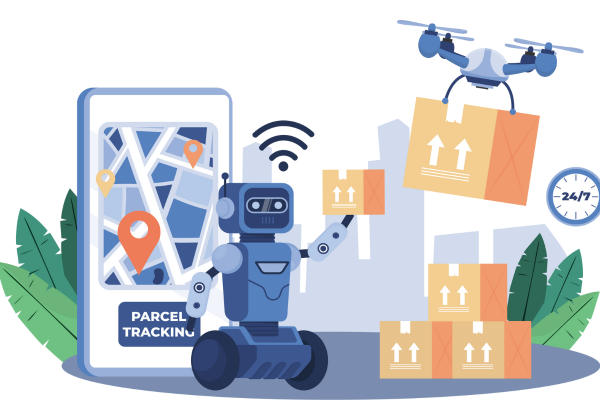Unleashing the AI Revolution: Transportation Industries
Category: AI Revolution
Introduction:
The transportation industry is on the brink of a groundbreaking change, with Artificial Intelligence (AI) playing a central role in this transition. AI is transforming the way we travel and is leading the development of more intelligent, secure, and effective transportation networks. AI is redesigning the future of mobility, from self-driving cars to advanced traffic control systems.
1. Autonomous Vehicles: The Road Ahead:
Self-driving vehicles, also known as autonomous vehicles, are considered to be a fascinating progress in the field of artificial intelligence. These vehicles utilize machine learning, computer vision, and sensor data to operate on roads with limited human involvement. Tesla, Waymo, and Uber are at the forefront of creating self-driving cars that aim to lower accidents caused by human mistakes, alleviate traffic jams, and offer transportation options for individuals who cannot drive.
Key Technologies Involved:
- Machine Learning: Helps vehicles learn from vast amounts of driving data to make better decisions on the road.
- Computer Vision: Allows cars to interpret and respond to visual information from cameras, such as recognizing traffic signs, pedestrians, and other vehicles.
- Sensor Fusion: Combines data from various sensors (like LiDAR, radar, and cameras) to create a comprehensive understanding of the vehicle's surroundings.
2. Intelligent Traffic Management:
Traffic management systems are being revolutionized by AI as well. Inefficient traditional traffic lights and control systems can cause congestion. AI-powered traffic management systems utilize real-time data to improve traffic flow, decrease wait times at intersections, and reduce overall travel time.
How AI Helps:
- Real-Time Analytics: AI analyzes traffic patterns and adjusts signal timings accordingly.
- Predictive Modeling: AI predicts traffic conditions based on historical data and current trends, helping to prevent bottlenecks before they occur.
- Dynamic Routing: AI-based navigation apps provide real-time updates and alternative routes to avoid congestion.
3. Enhanced Safety Features:
Transportation prioritizes safety above all, and AI plays a critical role in improving it. Vehicles are equipped with AI-powered systems to aid drivers, avoid accidents, and uphold safety standards.
Innovative Features:
- Advanced Driver Assistance Systems (ADAS): Includes features like adaptive cruise control, lane-keeping assist, and automatic emergency braking.
- Predictive Maintenance: AI predicts potential vehicle failures and maintenance needs by analyzing patterns and sensor data, reducing the likelihood of breakdowns and accidents.
- Driver Monitoring: AI systems can monitor driver behaviour to detect signs of fatigue or distraction and issue warnings or take corrective actions.
4. Smart Logistics and Fleet Management:
Logistics and fleet management are being revolutionized by AI, which optimizes routes, decreases fuel consumption, and enhances delivery times. AI empowers companies to efficiently handle large fleets, guaranteeing punctual deliveries and minimizing operational expenses.
Conclusion:
The transportation industry is undergoing a fundamental transformation thanks to AI, resulting in increased intelligence, safety, and efficiency. AI-driven innovations, such as autonomous vehicles and intelligent traffic management, are poised to improve our daily travels and completely change the way we get around. Looking ahead, further advancements in AI within the transportation sector hold the potential to create a more interconnected and dynamic world.
